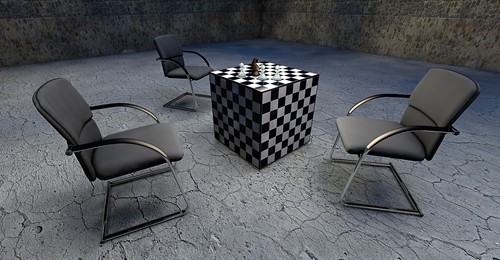
Flooring can add to the function of your newly finished basement, or it can take it away. Installing the wrong type of flooring material in a below-grade space could leave you open to costly water damage or even the growth of mold and bacteria. Even the best-built basements are sometimes prone to invasion by moisture seeping through concrete walls or up through subfloor materials. This is why it's vital to choose flooring that's specifically designed for below-grade use. If you want a finished basement that's attractive and functional, as well as one that won't require constant maintenance, opt for easy-care materials like those listed below.
Epoxy flooring is a mixture of resin with hardeners added. And if you've ever shopped the local food warehouse or super home store, you've likely seen epoxy flooring. Sleek and exceptionally glossy, epoxy can be applied with rollers over the course of a single weekend, giving you an attractive basement floor that's nearly impervious to damage. It's available in a full range of colors, as well.
Another easy flooring option for your new basement involves concrete that's been poured and smoothed with a rake and a squeegee. Afterward, the concrete can be stained or painted any color you desire. It can even be stamped to resemble other materials such as natural stone, brick or tile.
Laminate is a type of flooring that's installed as planks or tiles. It's a manufactured type of flooring that's extremely durable and can mimic the look and feel of hardwood at a fraction of the cost and without the worry of warping should it happen to get wet. Because it's installed in pieces as a floating floor, laminate is easy to repair if a section becomes damaged. Simply pop out the bad plank and replace it with a new one. This may mean removing part of the floor to get to the piece that's damaged, but there's no adhesive involved with laminate, so putting everything back is an easy fix.
Rubber flooring comes in multiple variations, including tiles and rolls. Either is good for basement flooring, but tiles are easy to replace should the need arise. Rubber is super easy to install, and it adds soft comfort to your below-grade space. It's also a great insulator. This translates into a lower utility bill each month. Residential-grade rubber flooring may be comparable in price, however, to other high-end flooring options such as natural stone.
These flooring options are all easy to install yourself, but if you doubt your DIY skills, your local contractor will be happy to help. Your newly finished basement can be a reality this year if you make savvy choices from the floor up.

Meet Norma, a trusted realtor in Middle Tennessee. With over 20 years of experience living in Smyrna with her husband and two children, she has a deep understanding of the local community. Norma's background in customer service and the medical field has given her the skills to provide excellent care and service to her clients, no matter the price point of their home.
With a passion for service and a commitment to professionalism, Norma strives to make each client's experience smooth and memorable. As a real estate agent, her first priority is education, as she listens to her clients' needs and wants and uses her skills and 10+ years of experience to deliver a stress-free and enjoyable home buying or selling experience.
Norma is dedicated to making a life-changing difference in her clients' lives and is committed to providing the highest level of service. Let Norma help you navigate the exciting journey of buying or selling your home.